
Data centres use almost a fifth of Irish electricity
The amount of electricity being used by data centres in Ireland has risen by 400% since 2015.
2023-06-12 22:18
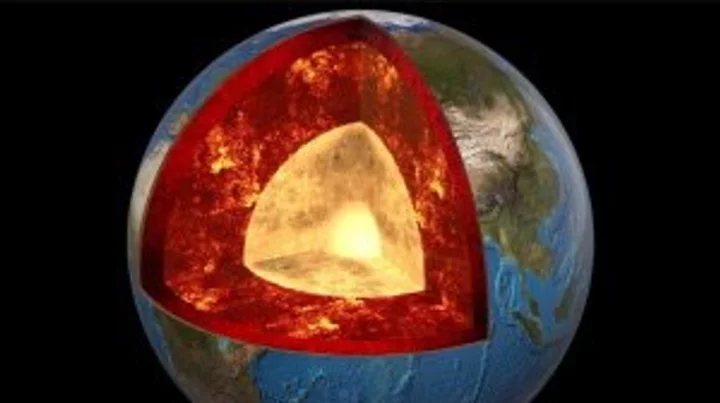
Two giant structures deep within the Earth could be the remains of an ancient planet
Many of us look to the stars for answers to life’s most complex questions. But actually, some of the greatest mysteries lie beneath our very feet. One might think we’d know the Earth pretty well by now but, in fact, our planet’s core remains shrouded in enigma. Indeed, there are two gigantic blobs located beneath Africa and the Pacific Ocean that occupy around six per cent of the world’s entire volume. And yet, we’re still not entirely sure what they’re made of or where they came from. There are a number of hypotheses, including that they are piles of oceanic crust that have accumulated over billions of years. Sign up for our free Indy100 weekly newsletter But a more interesting theory is that they are huge chunks of an ancient planet that hit the Earth around 4.5 billion years ago. To give an indication of just how massive these things are, the structure under Africa – an area known as Tuzo – is thought to be around 800km (497 miles) tall – the equivalent of some 90 Mount Everests stacked on top of one another, as IFLScience notes. The problem with determining the origin of these monster formations is that there are no direct ways of observing the Earth’s core. The deepest hole humans have ever dug – branded the "entrance to hell" – reached a pretty staggering 12,263m (40,230ft), but that doesn’t even come close to breaking through the crust to the layers beneath. Our most effective tool for analysing what lies beneath the ground is a technique called seismic tomography, which looks at how waves of energy travel when earthquakes occur. Since rocks and liquids have different densities, the waves move through them at different speeds. By measuring the tremors from different points on the surface, geologists can determine what kind of material the waves are travelling through and, in so doing, map out the Earth’s interior. It was by using this technique that the two unusual structures – known as large low shear velocity provinces (LLSVPs) – were found. Waves travel more slowly in these areas – fondly known as “blobs” – than through the surrounding lower mantle, indicating that they’re made of something different. We can’t tell what this material is based on seismic tomography data alone, but some scientists like to believe that they are the remnants of an ancient planet called Theia – an idea known as the “giant impact hypothesis”. According to this hypothesis, around 4.5 billion years ago, a Mars-sized object collided with the Earth. This impact not only created the planet we call home today, but also threw off enough rock to form the moon that lights up our night skies. Some scientists suggest that some of Theia’s leftovers also sunk to the bottom of the planet, probably settling somewhere above the core – thereby forming at least one of the two LLSVPs. More Updates About Strange Blob Structures Inside Planet Earth youtu.be Experts have been investigating the area for decades but there’s still no way of knowing for sure just what these two giant blobs are. Still, studies into Theia have offered important insights into how the possible collision might have kickstarted key plate tectonic and mantle motion inside our planet – crucial processes for establishing the world on which we live. It’s also a useful reminder that we still have so much to learn about our planet and where we came from. Have your say in our news democracy. Click the upvote icon at the top of the page to help raise this article through the indy100 rankings.
2023-06-12 16:46
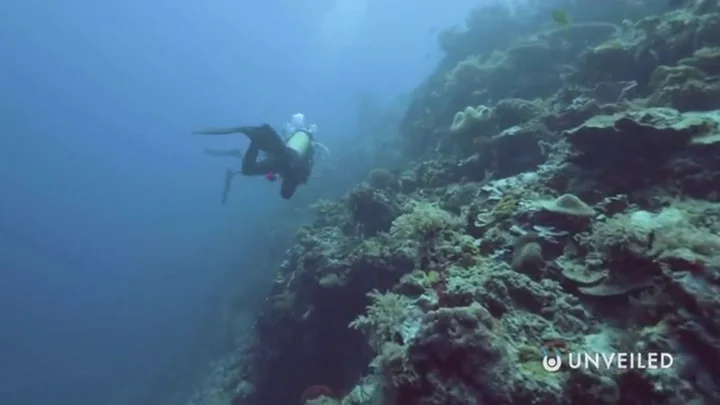
Massive ocean discovered beneath the Earth's crust containing more water than on the surface
It feels like there have been staggering science stories emerging every other day recently, all of which have blown our tiny little minds. First, there was the discovery of a terrifying black hole pointing right at us, then there was a huge hole found in the sun and a missing continent found after going missing for 375 years. Now, people are only just realising that there’s a massive ocean hidden under the Earth’s crust. It turns out there’s a huge supply of water 400 miles underground stored in rock known as 'ringwoodite'. Sign up to our new free Indy100 weekly newsletter Scientists previously discovered that water is stored inside mantle rock in a sponge-like state, which isn’t a liquid, solid or a gas, but instead a fourth state. The scientific paper titled ‘Dehydration melting at the top of the lower mantle’ was published in 2014 and laid out the findings. "The ringwoodite is like a sponge, soaking up water, there is something very special about the crystal structure of ringwoodite that allows it to attract hydrogen and trap water," said geophysicist Steve Jacobsen at the time. "This mineral can contain a lot of water under conditions of the deep mantle,” added Jacobsen, who was part of the team behind the discovery. He added: "I think we are finally seeing evidence for a whole-Earth water cycle, which may help explain the vast amount of liquid water on the surface of our habitable planet. Scientists have been looking for this missing deep water for decades." Scientists made the findings at the time after studying earthquakes and discovering that seismometers were picking up shockwaves under the surface of the Earth. From that, they were able to establish that the water was being held in the rock known as ringwoodite. If the rock contained just 1 per cent water, it would mean that there is three times more water under the surface of the Earth than there is in the oceans on the surface. Have your say in our news democracy. Click the upvote icon at the top of the page to help raise this article through the indy100 rankings.
2023-06-12 15:25

Every blue eyed person on the planet is a descendant of one single person
Blue eyed people listen up. Ever wondered why your eyes are the colour they are? Well wonder no more. Every blue eyed person is descended from a single European who lived around 6,000 to 10,000 years ago, according to scientists. How did they work it out? Originally, all humans had brown eyes in various shades until there was a specific mutation that made the change. The mutation is a gene called HERC2 and it switches off OCA2, the gene that determines how much brown pigment we make. Sign up to our free Indy100 weekly newsletter So that's why eyes become blue. As for being descended from the same person, the evidence for this is because every blue eyed person alive today has this same mutation. Scientists reckon only 8 to 10 per cent of the population have blue eyes and eyes don't fully develop in childhood meaning the brown pigment can kick in later, causing blue eyed children to end up with brown eyes in adulthood. So if you have blue eyes, now you know - your family is a lot bigger than you might have thought previously. Have your say in our news democracy. Click the upvote icon at the top of the page to help raise this article through the indy100 rankings.
2023-06-12 15:23
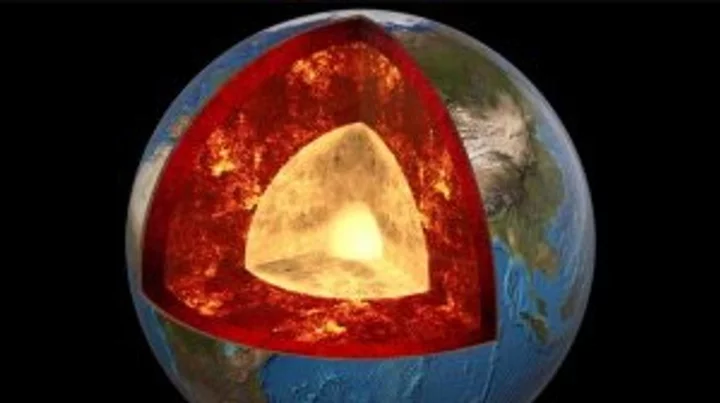
Ancient formation discovered wrapped around Earth's core
The structure of the Earth beneath our feet has been fascinating to members of the scientific community recently, and it turns out it’s far more complex than people initially thought. First, we learned of the news that there’s a massive ocean beneath the Earth’s crust which contains more water than all of the seas on the surface. Now, another study has been published which has taken an in-depth look at the geology beneath the southern hemisphere. The new research, published in Science Advances, has found evidence that an entire ocean floor actually runs the length around the core. Sign up to our new free Indy100 weekly newsletter This is a relatively thin layer that sits on the core-mantle boundary around 1,800 miles beneath the surface of the Earth. It's an ancient formation that could provide more insight into the structure of the planet beneath our feet. Geologist Samantha Hansen and her colleagues from the University of Alabama led the research. They observed the structure by using 15 monitoring stations under the ice of Antarctica, mapping the waves from earthquakes. Doing this allowed them to analyse the structure of the Earth below the surface, including the ultra-low velocity zones where waves moved much slower. "Seismic investigations, such as ours, provide the highest resolution imaging of the interior structure of our planet, and we are finding that this structure is vastly more complicated than once thought," Hansen said. "Analyzing [thousands] of seismic recordings from Antarctica, our high-definition imaging method found thin anomalous zones of material at the CMB everywhere we probed," geophysicist Edward Garnero from Arizona State University also said. "The material's thickness varies from a few kilometers to [tens] of kilometers. This suggests we are seeing mountains on the core, in some places up to five times taller than Mt. Everest." "Our research provides important connections between shallow and deep Earth structure and the overall processes driving our planet," Hansen added. Have your say in our news democracy. Click the upvote icon at the top of the page to help raise this article through the indy100 rankings.
2023-06-12 15:15

Over 60,000 Android Apps Found Loaded With Adware
At least 60,000 Android apps carried adware in the last six months, according to the
2023-06-12 09:53

Here's why energy drinks could be the secret to a longer life
Energy drinks could be the secret to a long life - here's why. The drinks contain a substance called taurine, a naturally occurring amino acid that scientists have been testing on mice and worms and working out that it is increasing their life spans. The study saw some mice at around middle-age given taurine, whereas others weren’t. Mice of both sexes saw increased life span by around 10 to 12 per cent, whereas life expectancy at 28 months was 18 to 25 per cent higher. Sign up to our free Indy100 weekly newsletter They also had healthier bone, muscle, immune system, fat, pancreas, brain, and gut functioning. In the journal Science, the team wrote: "Taurine abundance decreases during aging. "A reversal of this decline through taurine supplementation increases health span and life span in mice and worms and health span in monkeys. “This identifies taurine deficiency as a driver of aging in these species." They added: "Given that taurine has no known toxic effects in humans (though rarely used in concentrations used here), can be administered orally, and affects all the major hallmarks of aging, human trials are warranted to examine whether taurine supplementation increases healthy life span in humans." However, scientists aren’t advising anyone to change their taurine intake, as research is still in its early days, and energy drinks have other ingredients that may not be as positive. Prof Henning Wackerhage, from the University of Munich, said: "What we really need now is a human intervention study. “We are raring to go." Have your say in our news democracy. Click the upvote icon at the top of the page to help raise this article through the indy100 rankings.
2023-06-11 17:53
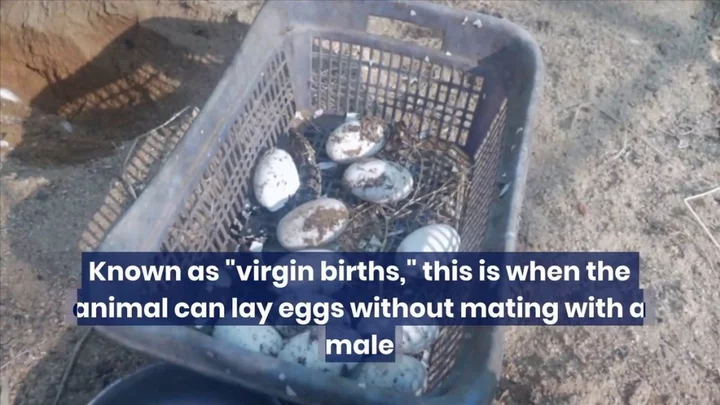
Here's how a crocodile made herself pregnant
A crocodile has made herself pregnant in what is believed by scientists to be a world first. The crocodile at the Costa Rica zoo created a foetus that was 99.9 per cent genetically identical to itself, often known as a "virgin birth." This process typically does not occur with crocodiles but with other species such as birds, lizards, snakes, fish and sharks. Sign up to our free Indy100 weekly newsletter Scientists believe this kind of solo reproduction could be traced back to the dinosaurs, as they suggest the species may have also been capable of this rare method. The latest study was published on Wednesday (June 7) in the Royal Society journal, Biology Letters. Back in January 2018, an egg was laid by an 18-year-old female American crocodile in Parque Reptilania, the BBC reported. The fully formed foetus did not hatch however and was stillborn. Researchers from Virginia Polytechnic Institute and State University, say this is the "first documentation" of this kind of reproduction in this species. Dr Warren Booth who has studied virgin births (parthenogenesis) for 11 years theorised that this reproduction method has not been seen in crocodiles because weren't looking out for this happening. ''There was a big increase in reports of parthenogenesis when people started keeping pet snakes. But your average reptile keeper doesn't keep a crocodile," he noted to the BBC. "This new evidence offers tantalizing insights into the possible reproductive capabilities of extinct archosaurian relatives of crocodilians, notably the Pterosauria and Dinosauria," experts said in the study. Have your say in our news democracy. Click the upvote icon at the top of the page to help raise this article through the indy100 rankings.
2023-06-08 23:49

An AI robot dog has become an art critic - and poops out his reviews
If AI wasn't advancing at a rapid enough rate, there's now a robot dog art critic in existence - and warning, he judges with his tail. AICC (Artificially Intelligent Critical Canine) has the ability to look around a room as well as move, and he can quickly come up with comments about the pieces. The pooch operates on wheels, and once he's gathered his thoughts, he 'poops' out a piece of paper with his full review. Pretty impressive. Click here to sign up for our newsletters
2023-06-08 23:49

Worker who 'lost her job to AI' applies for role training AI to do her job
A woman on TikTok claimed she lost her job to artificial intelligence, and has now applied for the role to train AI to do her job in a bizarre turn of events. Copywriter Emily (@emilyhanley69) took to the platform to share that her company laid her off and brought in AI as a cheaper alternative. She then explained how there was a job opening to train the software to copy write. "And I’m going to have to take it," she said. "I’m going to have to take it because I cannot afford my apartment." She continued: "I’m about to eat a can of garbanzo beans. I’m selling off my possessions. I’m in no place to turn down a job. No place." "It’s literally going to take away the prospect [of] me finding a job in the future. But I don’t have a way out. There’s no choice for me," she said. Sign up for our free Indy100 weekly newsletter @emilyhanley69 Update: I didn’t get the job! #AI #work #copywriter While Emily later updated her followers that she did not get offered the job, fellow TikTokers took to the comments with their own takes on the situation. One person encouraged her to "Embrace it. Market yourself as a Ai consultant who trains Ai to write. Get the bag mama." Another highlighted how "short sighted" AI could potentially be across companies. "I just can't see how AI replaces writers well. it would give every company the same copy in a market basically," they wrote. A third focused on the positives, writing: "The flip side is, your next set of jobs could literally be being a consultant for marketing firms on using AI in their practice. You’ve got this!" Meanwhile, one fellow TikToker came up with a genius plan to "train AI to do the job wrong" as a form of revenge. Have your say in our news democracy. Click the upvote icon at the top of the page to help raise this article through the indy100 rankings.
2023-06-08 19:50
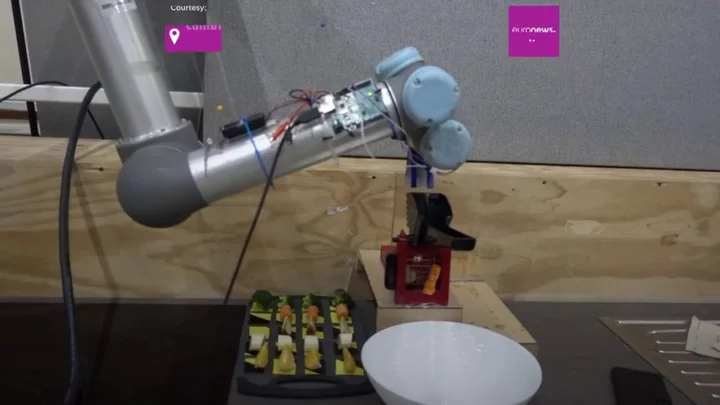
Scientists invent world's first ‘breathing, sweating, shivering’ robot
Scientists have created the world's first "breathing, sweating, shivering" robot in a major breakthrough. The technologically-advanced "thermal mannequin" known as ANDI has 35 controlled surfaces that allow the robot to produce sweat through 'pores'. Designed by US firm Thermetrics, there are just 10 ANDIs in the world. It was designed to gauge a better understanding of the health impacts of extreme temperatures on the body. "ANDI sweats, he generates heat, shivers, walks and breathes," explained Konrad Rykaczewski, principal investigator for the ASU research project. Rykaczewski continued: "There’s a lot of great work out there for extreme heat, but there’s also a lot missing. "We’re trying to develop a very good understanding of how heat impacts the human body so we can quantitatively design things to address it." Sign up for our free Indy100 weekly newsletter Some ANDIs are already being used by sports clothing companies to test garments. Meanwhile, ASU's version is the first that can be used outdoors. Jenni Vanos, associate professor in the School of Sustainability said: "You can’t put humans in dangerous extreme heat situations and test what would happen. "But there are situations we know of in the Valley where people are dying of heat and we still don't fully understand what happened. ANDI can help us figure that out." Later this year, ANDI will be paired with ASU's biometeorological heat robot to delve deeper into human sweating mechanisms. Ankit Joshi, an ASU research scientist leading the modelling and operating of ANDI, said: "We can move different BMI models, different age characteristics and different medical conditions (into ANDI),” "A diabetes patient has different thermal regulation from a healthy person. So we can account for all this modification with our customized models." Have your say in our news democracy. Click the upvote icon at the top of the page to help raise this article through the indy100 rankings.
2023-06-08 18:55
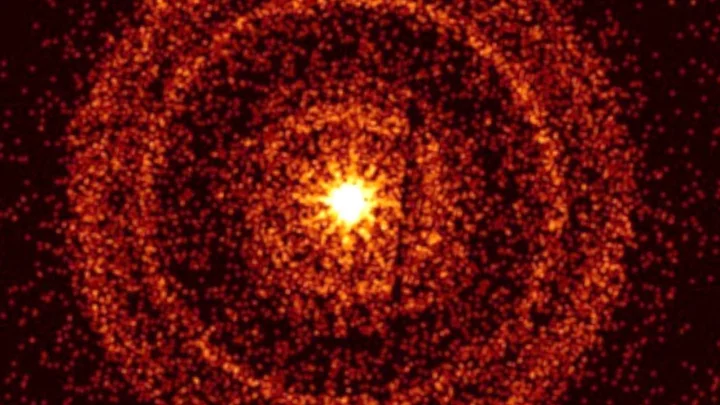
The brightest explosion ever seen in the universe has finally been explained
It’s the brightest explosion ever seen in the universe, but until now it’s been a mystery that couldn't be explained. Telescopes observed an enormous blast in October which was regarded as the biggest of all time. It was identified as a gamma-ray burst, named GRB 221009A, which came as a result of a massive star collapsing into a black hole. At the time it was a mystery as to why the explosion shone so brightly. Now, further research published in the journal Science Advances has uncovered the reason it was so bright is due to the fact it was facing directly at us and also pulled stellar material along with it. Sign up to our free Indy100 weekly newsletter Hendrik Van Earthen from the University of Bath said: “The slow fade of the afterglow is not characteristic of a narrow jet of gas, and knowing this made us suspect there was an additional reason for the intensity of the explosion, and our mathematical models have borne this out. “Our work clearly shows that the GRB had a unique structure, with observations gradually revealing a narrow jet embedded within a wider gas outflow where an isolated jet would normally be expected.” The research into GRB 221009A has the potential to further the study of huge gamma-ray bursts, which can produce as much energy as the Sun will in its entire lifetime in the space of just a few seconds. “GRB 221009A represents a massive step forward in our understanding of gamma-ray bursts, and demonstrates that the most extreme explosions do not obey the standard physics assumed for garden variety gamma-ray bursts,” Brendan O’Connor, GW graduate student and lead study author, said. “GRB 221009A might be the equivalent Rosetta stone of long GRBs, forcing us to revise our standard theories of how relativistic outflows are formed in collapsing massive stars.” Have your say in our news democracy. Click the upvote icon at the top of the page to help raise this article through the indy100 rankings.
2023-06-08 18:24
